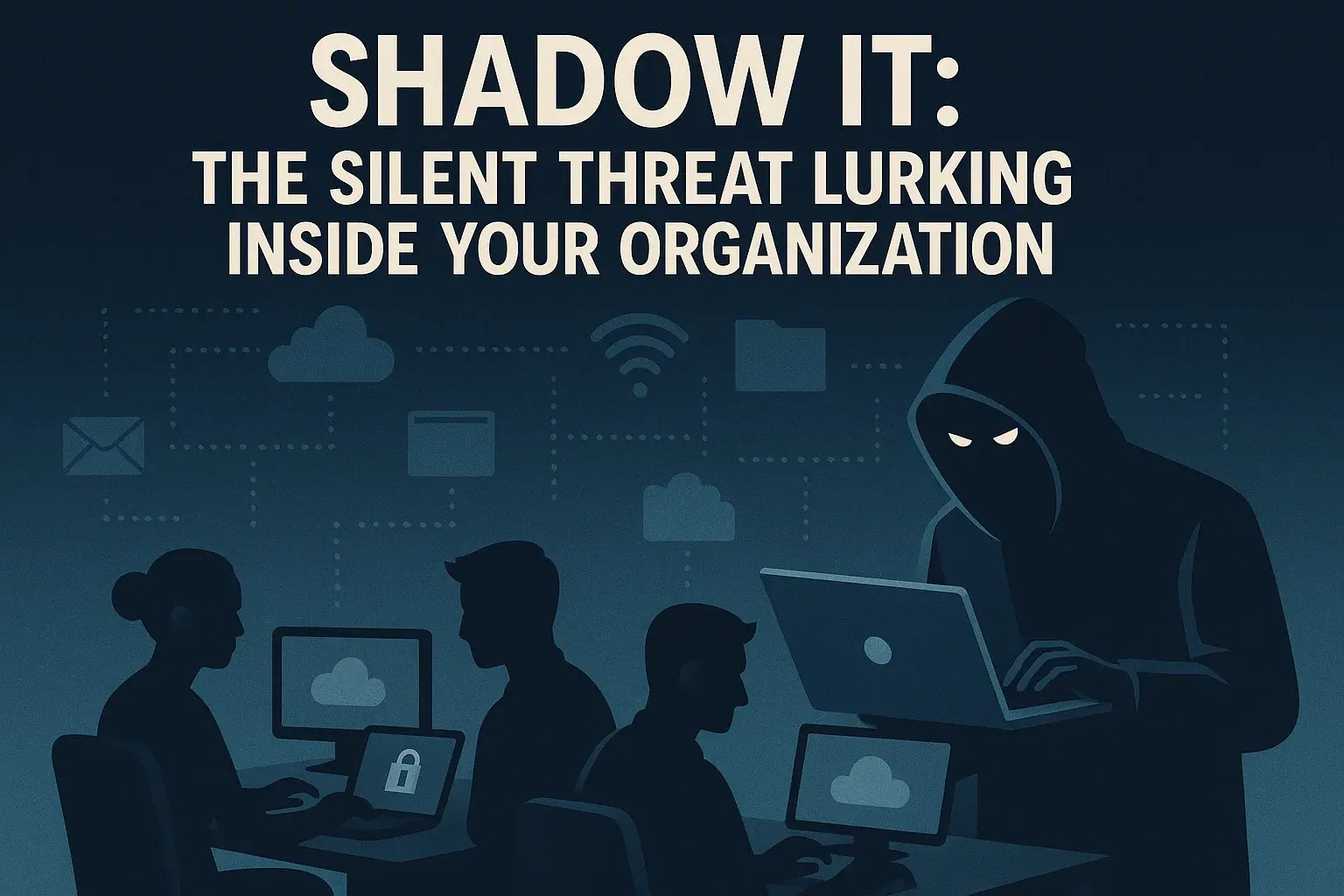Shadow IT: The Silent Threat Lurking Inside Your Organization
Read Time 4 mins | Written by: Noman Azam

What Is Shadow IT?
Shadow IT refers to any hardware, software, or cloud service used by employees without the knowledge or approval of the IT department.
It often starts innocently—someone downloads a productivity app, connects to a third-party file-sharing service, or installs a browser extension to make work easier. But what feels like a shortcut can quickly turn into a serious security gap.
Why Shadow IT Is a Problem
You can’t protect what you don’t know exists. And that’s what makes Shadow IT so dangerous.
1. Lack of Visibility = Increased Risk
When tools are used outside of IT’s radar, they don’t go through normal security checks—like patching, access control, or encryption.
2. Compliance Violations
Shadow IT can result in non-compliance with regulations like GDPR, HIPAA, or ISO 27001 if sensitive data is processed or stored in unauthorized locations.
3. Inconsistent Security Standards
Employees may use weak passwords, leave systems unpatched, or expose internal data through misconfigured tools.
4. Data Leakage
When employees use personal Dropbox accounts, messaging platforms, or AI tools, your data may end up in systems you don’t own—and can’t secure.
Real-World Examples of Shadow IT Risks
-
Unauthorized Cloud Storage: An employee saves internal project files to a personal Google Drive account, which is later compromised.
-
Messaging Apps: Teams use unapproved chat tools to discuss client issues, exposing sensitive data in unencrypted channels.
-
Third-Party AI Tools: Employees feed customer data into generative AI platforms that store or reuse the information.
How to Detect Shadow IT in Your Business
-
Network Traffic Monitoring
-
Look for outbound traffic to unapproved domains or cloud services.
-
-
Endpoint Audits
-
Use endpoint detection tools to identify unsanctioned apps or browser extensions.
-
-
Cloud Access Security Brokers (CASBs)
-
CASBs can detect and control the use of cloud services across your environment.
-
-
Engage Employees
-
Run internal surveys to identify tools employees use—and why they feel the need to go outside of approved systems.
-
How to Mitigate Shadow IT Without Slowing Productivity
1. Create an Approved Tools List
Maintain and share a vetted list of secure applications employees can use freely.
2. Offer Better Alternatives
If employees turn to Shadow IT, it’s often because the approved tools are too limited or slow. Make sure your supported software is usable and efficient.
3. Set Clear Policies
Define what’s allowed, what isn’t, and why. Educate your staff on the risks—not just the rules.
4. Implement Technical Controls
Use tools like:
-
Data Loss Prevention (DLP) to block risky file transfers
-
Browser security policies to restrict extension installations
-
Identity and Access Management (IAM) to control who can use what
Final Thoughts: Visibility = Control
Shadow IT is one of the most common and most overlooked cybersecurity risks in modern businesses—especially with hybrid work and bring-your-own-device cultures.
The solution isn’t just to lock everything down. It’s to create visibility, engage your workforce, and build secure options that enable people to work safely and efficiently.
Want to Uncover Shadow IT in Your Business?
We help businesses detect, assess, and eliminate Shadow IT while preserving productivity. Get in touch to schedule a cybersecurity visibility audit.